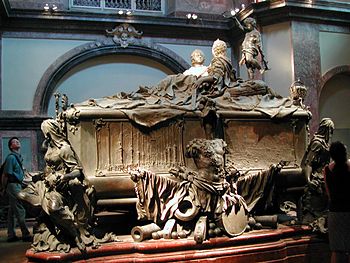When one thinks of strange funerary traditions, the unique practices of the Capuchin monks may come to mind. This small sect of Catholic Franciscan monks was established in 1525 in the Umbria province in Italy, and while their general reformation ideology may not appear all that different to an outsider’s eyes, in recent times their strange burial rites and uncommon philosophy on facing death have become a fascinating subject of study for the general public.
The Capuchin monks hold a steadfast belief that a good Christian should never fear death, and likewise, that they should live in the awareness of its inevitability while retaining hope and faith in Christ. On the surface this concept alone is not that surprising, but what has stirred the interest of outsiders is the practical application of this belief. Due to their particular stance on death, many Capuchin crypts have been turned into museums left open to the public. What’s more, because of their philosophy on death, these crypts generally contain graphically detailed sarcophagi with images of death and massive ossuaries with the bones of past monks meticulously and artistically arranged on the walls and ceilings.
Capuchin crypts have been turned into museums left open to the public.
During the summer, I had the unique, first-hand experience of visiting some of these unique and beautiful crypts when I entered the Imperial Capuchin crypt in Vienna, Austria. Located beneath the famous Capuchin church of Vienna, this crypt contains the remains of 145 members of the ruling line of Austria. Even for a non-spiritual person such as myself, taking a walk through the pristine halls of the crypt was incredibly serene. The cool temperature of the rooms was a welcome relief from the relentless summer heat, and the monks seemed somehow less imposing as they quietly attended to the tombs. The huge sarcophagi were inconceivably large and beautiful with winding spirals of roses, laurels and detailed skulls seamlessly molded into the bronze.
Perhaps the most famous Capuchin crypt is the Santa Maria della Concezione dei Cappuccini located in Rome. This crypt contains the remains of over 4,000 Capuchin monks from 1528 to 1870 displayed decoratively on the walls and ceiling of the ossuary. For many years it has been a tourist attraction, including visitors renowned as the Marquis de Sade and Mark Twain, but more importantly it is a place of reflection for the Monks who visit it daily to meditate and pray.
“What you are now, we once were; what we are now, you shall be.”
Most notable is the multilingual plaque that hangs in one of the chapel rooms and declares, “What you are now, we once were; what we are now, you shall be.” This solemn memento mori connects us to a past that may not be as distant as we think. Surrounded by the baroque and rococo artistic transformations of the remains of the past, it bridges the gap between then and now, and allows us an incredibly transformative way to relate to death through art and to the struggles of our past ancestors.
Related SevenPonds Articles:
- Traditional Jewish Burial Rites
- Celtic Dreamlands and Burial Rites
- Unlocking the Meaning of Dia de los Muertos

 Illuminating Death through Art
Illuminating Death through Art





 First the Wealth Gap, Now the U.S. Has a Growing Health Gap
First the Wealth Gap, Now the U.S. Has a Growing Health Gap
 How to Comfort A Dying Loved One
How to Comfort A Dying Loved One
 Our Annual Seven Holiday Gifts for Someone Who Is Grieving, 2024 Edition
Our Annual Seven Holiday Gifts for Someone Who Is Grieving, 2024 Edition














